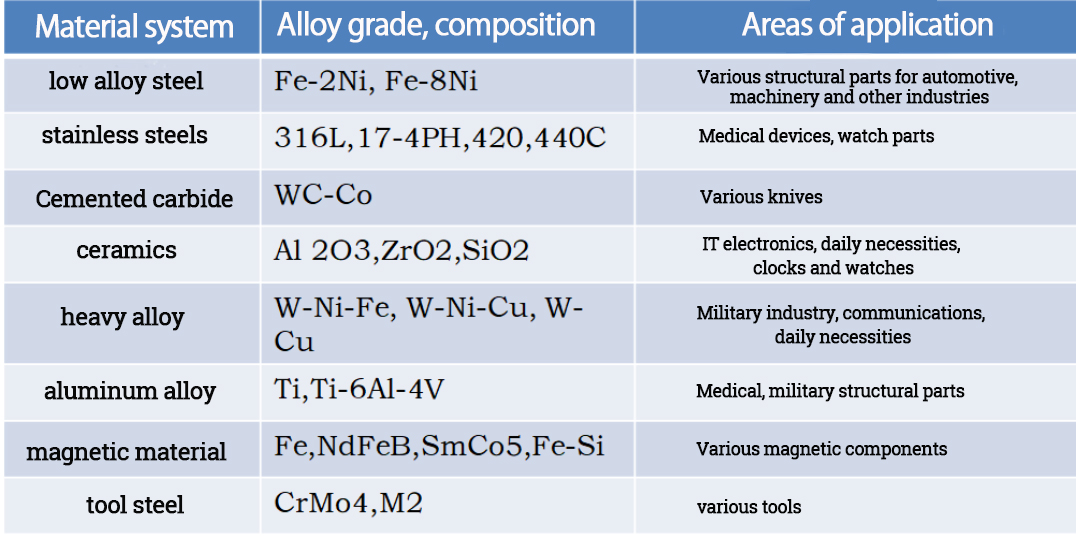MIM combines the advantages of powder metallurgy and plastic injection molding technology, breaks through the traditional metal powder molding process in the product shape limitations, while using the plastic injection molding technology can be high-volume, high-efficiency molding of parts with complex shapes of the characteristics of the modern manufacturing of high-quality precision parts of a near-net molding technology, with the conventional powder metallurgy, machining and precision casting processing methods can not be compared with the advantages of the method. Methods can not be compared with the advantages.
1, can mold highly complex parts
Relative to other metal forming processes, such as sheet metal stamping, powder molding, forging and machining, MIM can form highly complex geometric parts.
Complex part structures that can be achieved by plastic injection molding are generally possible with MIM.
Using this feature, the use of MIM has the opportunity to combine multiple parts originally processed by other metal molding into one part, simplify product design, reduce the number of parts, thereby reducing product assembly costs.
2、 High material utilization rate
MIM molding is a near-net molding process, the shape of its parts has been close to the final product form, high material utilization, which is particularly important for the loss of precious metals processing.
3, the part microstructure uniformity, high density, good performance
MIM is a fluid forming process, the presence of adhesives to ensure the uniformity of the powder arrangement, thus eliminating the unevenness of the microstructure of the blank, and then the density of sintered products can reach the theoretical density of its materials.
Generally speaking, MIM can reach 95% to 99% of the theoretical density, high densification can make MIM parts to increase strength, toughness, ductility and electrical and thermal conductivity has been improved, magnetic properties.
The traditional powder molding pressed parts, its density can only reach a maximum of 85% of the theoretical density, which is mainly due to the mold wall and powder and powder and powder friction between the pressing pressure distribution is not uniform, which also leads to the pressing of blanks in the microstructure is not uniform.
This will cause the pressed powder metallurgy parts in the sintering process shrinkage is not uniform, and therefore have to reduce the sintering temperature to reduce this effect, thus making the product porosity, poor material densification, low density, seriously affecting the mechanical properties of the parts.
4, high efficiency, easy to achieve large quantities and large-scale production
MIM using injection molding machine product blanks, production efficiency has increased dramatically, suitable for mass production; injection molding products at the same time the consistency, repeatability is good, so as to provide a guarantee for high-volume and large-scale industrial production.
5, wide range of suitable materials, a wide range of applications
Applicable to MIM metal materials are very wide, in principle, any high temperature casting of powder materials can be manufactured by the MIM process into parts, including the traditional manufacturing process of difficult-to-machine materials and high melting point materials.
Metals that can be processed by MIM include low alloy steels, stainless steels, tool steels, nickel-based alloys, tungsten alloys, cemented carbides, titanium alloys, magnetic materials, Kovar alloys, fine ceramics, etc. In addition, MIM can also be customized to meet the specific needs of the customer.
In addition, MIM can also conduct material formulation studies to manufacture any combination of alloy materials and mold composite materials into parts according to user requirements.

MIM forming of non-ferrous alloys aluminum and copper is technically feasible, but is often handled by other more economical means, such as die casting or machining.
6 High part accuracy
The dimensional accuracy of MIM parts is usually ± 0.5% of the size, and precision levels can reach ± 0.3% or more.
For smaller part sizes, relative to other casting processes, MIM's higher accuracy, generally do not have to carry out secondary processing or only a small amount of finishing, thus reducing the cost of secondary processing.
As with other processes, the higher the dimensional accuracy requirements, the higher the cost, so in the case of quality allows to encourage a moderate relaxation of the tolerance requirements.
MIM molding can not achieve the tolerance can be achieved with the help of surface treatment.




 ipcode:
ipcode: